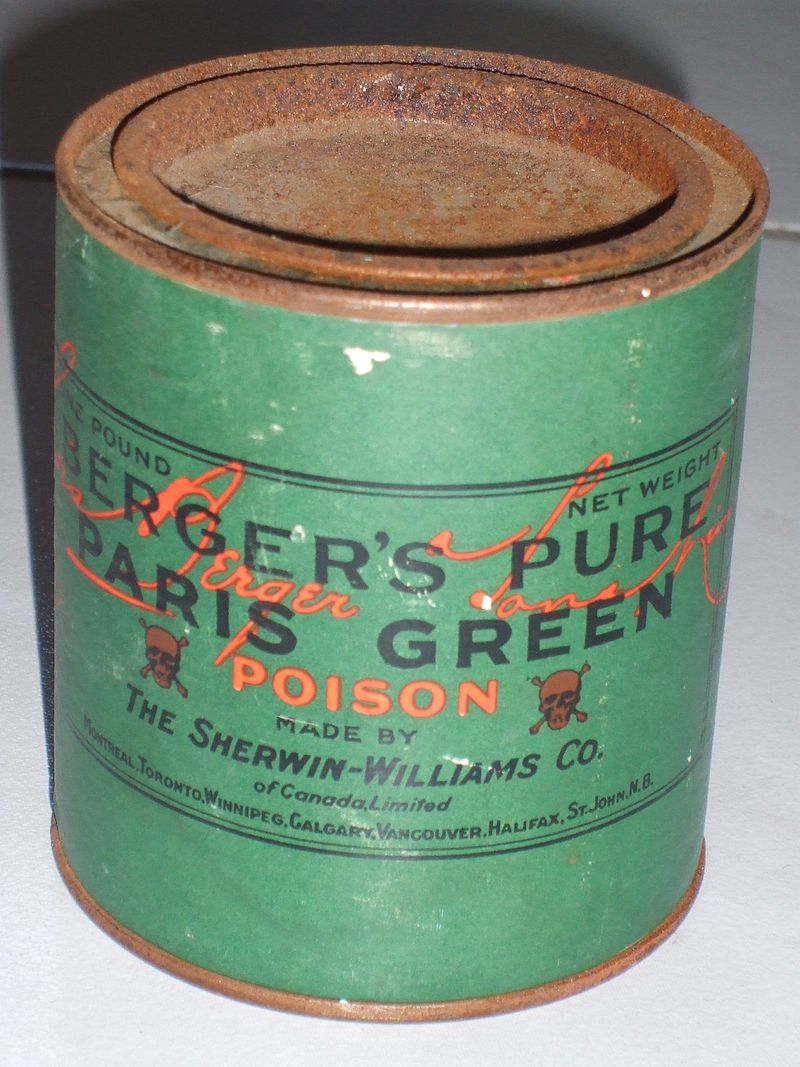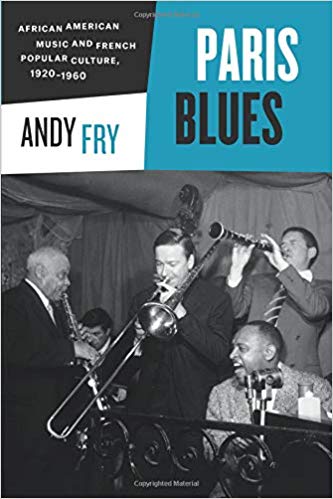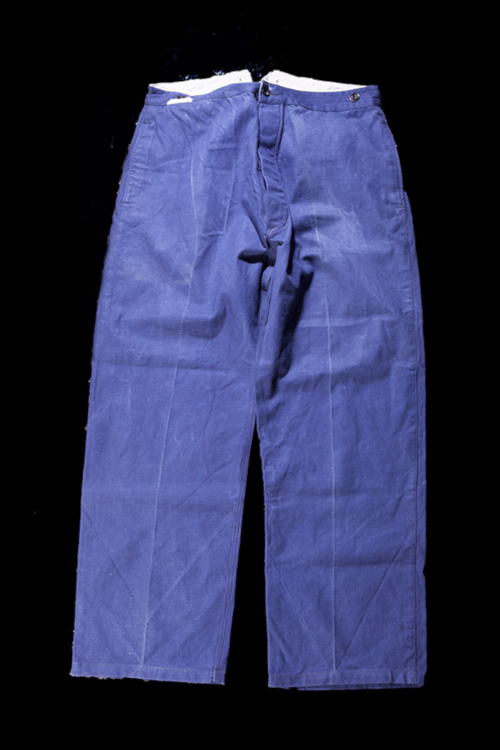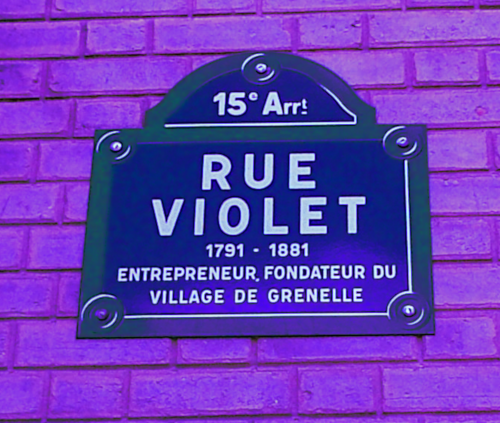Per our May 4, 2019, post, “Paris/France and…” is a new series wherein “and” leads us to categories (such as food groups, the classical elements, etc.) whose subcategories link to the city/country we know and love. Today’s entry focuses on Paris/France and Colors, per the spectrum that might have hung in your high-school physics class back in Blue Ash, Idaho or Yellow Pine, Alabama or Red Lick, Texas.
RED:
If you have not visited the legendary Moulin Rouge (“Red Windmill”) cabaret in person (or even if you have), certainly do so via their website. By the time you’ve clicked on absolutely everything–that’s: absolutely everything–that’s clickable on, you’ll feel as if you’ve just been treated to a whirlwind masterclass on Parisian history, culture, cuisine, facts, and figures (the latter in the numerical and, appropriately, corporeal sense). Whew!
“On her way to the stairs Leslie stops in the doorway to peer out at the primary colors of the Place de Clichy. No pastels for this neighborhood. It doesn’t seem to merit the pinks blushing over Avenue Montaigne from Dior’s spring windows or the apple greens splashing from the Place des Vosges onto the Italian Renaissance arcades bordering its little square park. It’s being at a baseball game, the Place de Clichy, being at a baseball game, sweeping the bleachers in a huge visual arc and always seeing the reds first–starting at the seats to the left of where you are, letting your eyes drift right, from point to point, full around, up and down aisles, across rows, until you’re back where you began, wherever your eyes want to go, and where they wind up wanting to go is wherever the red is: caps, banners, halter tops, lipstick, shorts, programs, sneakers, lettering on popcorn boxes, t-shirts, sunglass frames, an empty seat. The yellows bleed in later. The blues bubble up to the surface. But they’re on the bench at the ballgame; it’s always the reds up at bat.
As Leslie blurs her eyes, the Place de Clichy secretes its red, smears it around, lipstick on the Place de Clichy. A Moulin Rouge dancer carrying a red workout bag flits from rehearsal, past a street vendor’s red-plastic table, into a tabac whose red neon sign and red awning are partly blocked by a bus-borne ad for the laundry detergent that got the model-baby’s overalls back to their original, pre-mud-pie red. Only then does the yellow on the street vendor’s jacket filter through, and the blue in the fast-food-place lettering next to the tabac. And only after that the tarnished-copper green of the Belle Epoque curlicue metal métro sign.
ORANGE
is the name given on July 1, 2013, to the national phone (now landline/cellphone/ broadband/fiber/internet-protocol tv) company, which had been the PTT (Postes, Télégraphes et Téléphones) from 1921 to 1991, when it was split into La Poste and France Telecom. According to Daniel Thomas, Financial Times telecoms correspondent, writing on May 29, 2013, “Orange was first created as the name for a UK mobile operator owned by Hong Kong’s Hutchinson in the early 1990s, before it was acquired by France Telecom from Vodaphone in 2000.”
An orange = une orange. An orange tree = “un oranger,” per the practice of adding er or ier to the name of most types of fruit in order to make the name of their (always masculine-noun) tree. The word for fruit itself–le fruit–gets an ier to turn it into an adjective: un arbre fruitier = a fruit tree.
And clicking on absolutely everything–that’s: absolutely everything–that’s clickable on here (the occasional incursion of Frenglish aside) will take you on a tour of the geographical Orange, featuring, among other marvels, its interesting, ancient history.
YELLOW:
Why “yellow” headlights in the Dale Gershwin sentence below?
“At the place de la Concorde, Paris seems like it’s moving backward in its day, going to sleep under the grayened ceiling of rain. Smashing its newborn sun into bits of yellow headlights.”
Because it was written in 1991. A Trip Advisor posting of July 19, 2006 (with British spelling and its own small dose of Frenglish) tells us that “Those who have visited Paris before 1990 or so certainly remember a strange sight at night: all cars used to have deep yellow headlights, high beam and low beam. This yellow colour was introduced first for military purposes (it helped to distinguish French and foreign vehicles from above). It was kept afterwards with an added ‘scientific’ option, [claiming] that yellow lighting was more efficient during foggy nights. It was also stated that yellow headlights were less prone to dazzle drivers coming the opposite way. However, in 1993, European laws accomplishing harmonisation of vehicle homologation throughout Europe put a ban on this shiny colour for new cars. Hence the slow extinction of yellow headlights. Fewer and fewer vehicles have them…since replacement bulbs are now white.”
GREEN:
Where do we start? Where do we end? How do we possibly limit our exploration of Paris’s love affair with this color?
Well, since we know about the city’s lush spaces (per Wikipedia, “more than 421 municipal parks and gardens, covering more than three thousand hectares and containing more than 250,000 trees”–and if you have an enormous amount of time to spare, an all-consuming interest in history and in Paris, and great admiration for builders of massive websites, you’ll be well served here), we can begin with an unlikely, unexpected reference: Paris green (copper(II) acetate triarsenite or copper(II) acetoarsenite–so named because it was first used to kill rats in Parisian sewers), an inorganic compound that, according to Wikipedia, is “a highly toxic emerald-green crystalline powder that has been used as a rodenticide and insecticide, and also as a pigment, despite its toxicity. It is also used as a blue colorant for fireworks. The color of Paris green is said to range from a pale blue green when very finely ground, to a deeper green when coarsely ground.” Other sites highlighting Paris green also tend to go heavy on words like “deadly,” “toxic” and/or “poison”! Hmmmmm…..
On the opposite end of the…uh…spectrum, we have those ecologically aware Parisians who, as do their counterparts in Germany, Scandinavia and elsewhere in Europe, use “green” as a catchall adjective for “making sure all the vegetation of that color does not forever disappear from Planet Earth!” To this end there is:
- the ever-swelling preponderance of electric-car-share, bike-share and scooter-share phenomena (with now being as good a time as any to respectfully inform scooter riders that abandoning your means of transport in the smack-dab geometrical center of the unlit sidewalk at nightfall or pre-dawn is a pedestrian safety hazard at worst and the height of ignorant selfishness at best, and to helpfully inform our French readers that “scooter” = trottinette and scooter = “motorbike”)
- the July 1, 2016, ban on non-biodegradable plastic bags at the check-out counter and fruit stand, as well as a 2020 ban on plastic glasses, cutlery, plates and food boxes (with France supposedly being the first country in the world to put the latter into effect)
- the overarching Energy Transition for Green Growth Act, the Googling of which will take you to a number of English-language sites, including one containing a 32-page explanatory document that you might enjoy snuggling down with in one of the above-referenced lush spaces under one of the trees respected by the above-mentioned “green” Parisians.
BLUE:
Question – How do you link Paris to blue? Answer – You add an “s.” Paris is almost as dissociable from the blues as is New Orleans– interesting, since, per its Wikipedia page, New Orleans (la Nouvelle-Orléans) “is named after the Duke of Orleans [le Duc d’Orléans], who reigned as Regent for Louis XV from 1715 to 1723, as it was established by French colonists and strongly influenced by their European culture.”
But of course, Paris did not take the blues to NOLA (New Orleans, Louisiana, “LA” being the state-name abbreviation). NOLA, the Mississippi Delta, New York, Memphis, Nashville, Philadelphia, Chicago and all those farms and basements and clubs and street corners and army barracks and front steps in the land that can claim jazz and blues among its treasures took the music to Paris–and, as you’ll read here and here, “through 2,000 miles of tiny farm villages and big concert halls across France”!
Of “Paris Blues: African American Music and French Popular Culture, 1920-1960,” by Andy Fry, an engaging amazon.com review says: “The Jazz Age. The phrase conjures images of Louis Armstrong holding court at the Sunset Cafe in Chicago, Duke Ellington dazzling crowds at the Cotton Club in Harlem, and star singers like Bessie Smith and Ma Rainey. But the Jazz Age was every bit as much of a Paris phenomenon as it was a Chicago and New York scene. In Paris Blues, Andy Fry provides an alternative history of African American music and musicians in France, one that looks beyond familiar personalities and well-rehearsed stories. He pinpoints key issues of race and nation in France’s complicated jazz history from the 1920s through the 1950s. While he deals with many of the traditional icons–such as Josephine Baker, Django Reinhardt, and Sidney Bechet, among others–what he asks is how they came to be so iconic, and what their stories hide as well as what they preserve…Paris Blues provides a nuanced account of the French reception of African Americans and their music and contributes greatly to a growing literature on jazz, race, and nation in France.”
All of which we round out with a superb article from 2001 that explains the history, sociology, psychology, artistry of how the people of a far-away nation “clasped…to their bosom” this music and the mostly African-American artists who passionately brought it to them.
And if this has whetted your appetite for exploring some of these revered riffs, Googling “jazz clubs in Paris” will get you to pages and pages and pages of links to more venues than you’ll ever have time to hang out in.
INDIGO:
Didn’t you hate it when your fellow students (heavens! not you–them!) started essays/ presentations by unimaginatively writing/saying, “The dictionary defines X as…..”? Lame, right? We hated it, too. Yet here we are, about to do the same, because how else can we wrap our minds, keyboards, screens around something as elusive as this color?
And if you think THAT’s difficult, try connecting it to Paris! But WAIT! We had an idea: In Paris there are Indigo-brand hotels. There is a Camping Indigo Paris. Annnnnd, there are parking facilities run by the Indigo company, which advertises itself as the “car parking world leader,” and the “global leader in parking.”
And that got us thinking: Many Paris residents know more people who don’t own cars than people who do. Especially in this day of phone-based vehicle-apps, in this city with a reasonably well-functioning public-transportation system and in this country with a respectable railway network, unless one unequivocally needs a personal vehicle for getting to work, for doing one’s work, for ensuring that there is at least some semblance of nourishment in the refrigerator, “car” and “Paris” go together as readily as “France” and “not taking a vacation.” The reasons for this are many: the cost of the car, finding a parking space, the cost of registering the car, finding a parking space, the cost of insurance, finding a parking space, the cost of maintenance, finding a parking space, the cost of parking, finding a parking space. We think you’re catching on.
Which brings us to a website wherein the Paris Convention and Visitors Bureau offers info, hints, tips and warnings related to not only parking but also more general vehicle-use, and right out of the gate makes sure to advise us that “parking in Paris is rarely easy and can often be quite a headache”–in which case you might want to see what the RATP (Paris public-transport) and SNCF (French national railway) sites have to offer you, as well!
VIOLET
brings to mind rue Violet (Violet Street) and place Violet (Violet Square)*, both of which, as do most Parisian thoroughfares and squares, have their own Wikipedia entries. Of the city’s approximately 5,000 thoroughfare/square names, some contain the pure name of a color; some the name of a color as part of a larger word/name or a compound word; some a version of a color name, with a letter or two changed or added.
How many of these can you come up with? (Yes, you can cheat and go outside of Paris to its suburbs. And then outside of the Paris region to the rest of France!)
* The French usually don’t capitalize “rue,” “place,” “avenue,” “boulevard,” “passage,” “allée,” etc. unless it’s the first word in a sentence or the first word in a title–and (without going into detail here) the French are stingy with capitalization in titles, as well.
Look for more “Paris/France and…” installments in upcoming months.
Shari Leslie Segall is a writer who lives in Paris.
While doing the layout for this article your humble editor came across the following additional « colored » items:
- The Marché des Enfants Rouge is named as such because the space was previously occupied from 1524 to 1777 by a hospice for children who wore red smocks.
- French mailboxes are yellow. Yellow Vests.
- The soccer team of St Etienne is Les Verts. French pharmacy signs are always green. Paris and many other cities have streets called Chemin Vert. Read all about the trees in Paris in our article.
- The French national teams are called Les Bleus or Les Bleues. L’Heure bleue is the lovely time of late evening when the world looks blue. Le grande bleu = The Mediterranean Sea; Le Train Bleu = the train heading south to the Med and the eponyme restaurant at the Gare de Lyon. Les bleus de travail were the pants and shirts workers traditionally wore throughout the 20th century. The blue from Chartres is a unique color of stained glass appreciated the world over.
And to conclude young Americans learn to memorize the spectrum with the initialsim « Roy G. Biv ». British use the phrase » Richard Of York Gave Battle In Vain ». French children learn the spectrum from the other end starting with violet and remember the color names by thinking of this phrase: Vous Ici Belle Voisine, Joli Ovation Radieuse! or Vous inventez bien, vous, jeune oisif ridicule or Roger n’Obtient Jamais Vraiment Beaucoup d’Insectes Vivants.









